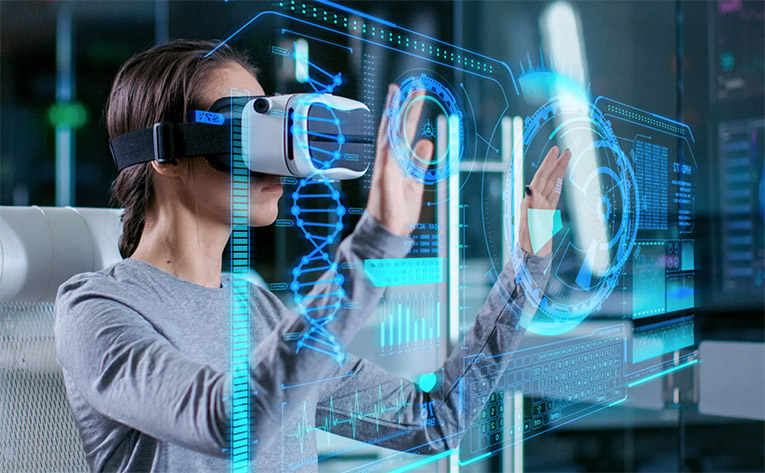Rockwell Automation keeps innovating in automation technologies, digitalization, and connected enterprise. During its 30th Automation Fair, celebrated last week in Houston, the company launched new virtual reality (VR) technologies to its Digital Twin portfolio.
Firstly, the Digital Twin is a simulation technology that enables the recreation of an asset in a digitalized realm. This allows operators to test production line changes before implementing them in the actual line and anticipate crashes, failures, or other incidents.
As a result, companies can increase their efficiency and production quality; while adding resiliency and flexibility to their production lines. To illustrate such capabilities, the company recreated a canning line from a fictitious Food and Beverage company on a huge top-notch display, located in the Innovations booth, on the exhibition floor of the Fair.
Moreover, the display also exhibited how the company’s ControlLogix Allen-Bradley systems operate. Before the display, Rockwell Automation’s employees sat on futuristic chairs wearing Virtual Reality goggles to show how they were immersed into the virtual reality experience of the digital twin.
Colton Gerlin, Commercial Project Manager of the company, explained the exhibition like this. “What we have here is our controls systems working on a digitalized version of a canning line, through our Emulate 3D software, that we acquired recently. This means that the ControlLogix are operating as if they were operating a physical, metallic machine.”
Also recommended for you: RWE launches renewables growth strategy; €50 billion investment by 2030. Click here to read.
VR addition to Digital Twin tech by Rockwell Automation, a must have for manufacturing companies
He also remarked. “These capabilities are not just for fun. We can recreate an asset in the digital realm through our Digital Twin technologies and test and assess sudden changes in the production line to anticipate any incidents. Otherwise, operators would have to implement those changes in the actual production line through trial and error, which is very costly.”
Moreover, the Virtual Reality capabilities are the new features that Rockwell’s Emulate 3D software has. This technology allows operators to have a first-person view of the digital asset; to be truly immersed in it as if they were looking at the physical line. Consequently, operators can have a true first-hand view of the production process.
On the other hand, the company also displayed a digitalized version of its contactors assembly line in Milwaukee. The line produces around 100+ types of different contactors with zero downtime. The line is capable of doing this through Rockwell’s automation solutions.
Gerlin commented about this. “The purpose of the line’s display is to show how it can control traffic of assembly and packaging with zero downtime. The robots actually control the assembly line, is like having a transit officer within the software.”
Finally, Gerlin talked about the line’s robots and their characteristics. He said that they are programmed with collaborative robotics, which allows working alongside humans without risks. “Collaborative robotics allows us, for example, to give maintenance to the robot while it is working, and without having to turn it off. It just slows down its movements to not impose any risk to personnel; as soon as technicians are out of the robot’s workspace, it automatically speeds up the normal assembly speed.”


